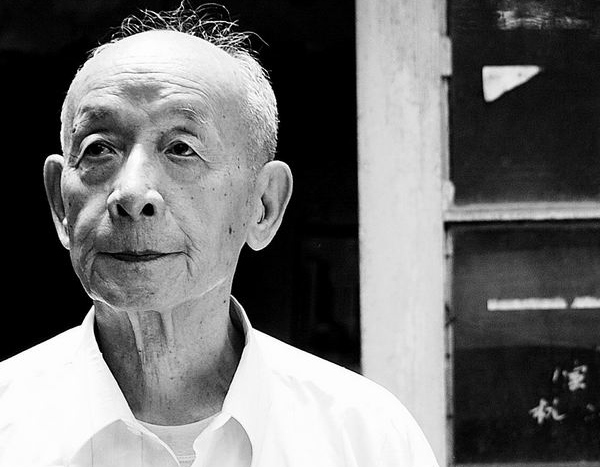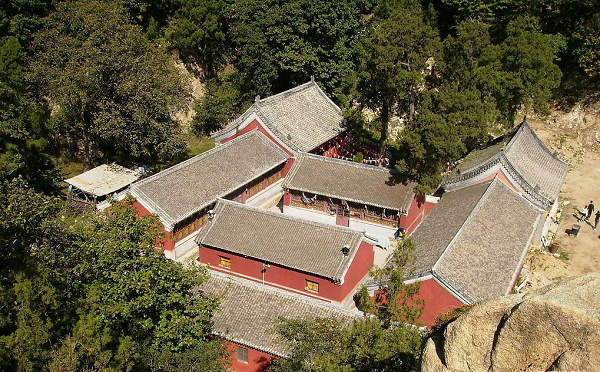Great geographical interchange made China cohesive

Chen Qiaoyi, a historical geographer and tenured professor at Zhejiang University

Hangzhou was the capital of the Southern Song Dynasty and is home to numerous relics and historical sites. In the 1980s, Chen Qiaoyi recommended that Hangzhou be added to the list of six major ancient capitals in China. The picture shows the royal palace of the Southern Song Dynasty in Hangzhou.
Chen Qiaoyi (1923-2015), formerly named Chen Qingjun, was a well-known historical geographer, expert on the study of Li (studies of Northern Wei geographer Li Daoyuan’s book Commentary on the Waterways Classic) and tenured professor at Zhejiang University. He has served as the director of the Geographical Society of China’s Specialized Committee of Historical Geography. He is the author of Corrections of Commentary on the Waterways Classic and Huai River Basin. In 2013, Chen Qiaoyi was awarded the “Chinese Geographical Science Achievement Award,” the highest honor in the field of Chinese geography, by the Geographical Society of China.
Following in the footsteps of Tan Qixiang (1911-1992), Hou Renzhi (1911-2013) and Shi Nianhai (1912-2001), Chen Qiaoyi was one of the most outstanding scholars in the field of modern Chinese historical geography.
He first made a name for himself within the field of historical geography with his studies of the Ningshao Plain. His remarkable achievements ranged from theories and methods of historical geography, historic urban geography and studies of ancient capitals to chorography and toponymy, especially the study of Li. A CSST reporter sat down with Chen Qiaoyi to discuss the study of Li and six ancient Chinese capitals in 2013. Chen passed away in February 2015, so we are printing his remarks here to commemorate his legacy.
CSST: You proposed the theory of “great geographical interchange” for the first time in China. So what role has “great geographical interchange” played in the formation of the Chinese nation?
Chen: Starting in the 4th century, tribes of nomads in Northern China passed over the Great Wall in sequence and settled down in the plains. The primitive ancestors of the Han people had to be coerced to migrate southward to rice-growing regions of the Yangtze River. On the one hand, the new lands greatly broadened horizons for new immigrants and their descendants. On the other hand, they still missed their native land and that was why many geographic theories emerged, and a number of related works were created during this period.
These geographical works abandoned the boundless speculation and hypotheses of the pre-Qin period and depended on direct or indirect practical experience, which included detailed and accurate descriptions for the first time in China. Later, these works became collectively known as chorography in the Six dynasties, and Commentary on the Waterways Classic is an incontrovertible leading work among them.
The processes of “great geographical interchange” and national integration have been underway for a long period. King Wuling of Zhao (approx. 340-295 BC) carried out the policy of “riding and shooting in the Hu people’s dress,” which in fact provided a preview of the great geographical interchange and national integration that entered into a period of accelerated development during the time of “Sixteen Kingdoms of Five Ethnic Groups” (304-439).
Emperor Xiaowen of Northern Wei’s Reform on Sinicization was actually the product of great geographical interchange, declaring that Hu and Han people have become a single family and national integration was basically achieved under that historical circumstance. So I think that although the “Sixteen Kingdoms of Five Ethnic Groups” was a period filled with wars and an abyss of misery, it was also the right time for multi-interchanges and national integration. The Chinese nation achieved cohesion in this process.
CSST: What kinds of developments have there been in the “study of Li”?
Chen: There is no knowledge of how the term “the study of Li” came to be. But the book Forty Fields of Guoxue (the academic study of traditional Chinese cultures), edited by Professor Bian Xiaoxuan (1924-2009) and Professor Hu Axiang (1963- ), has brought the study of Li into one of forty fields of guoxue.
After the Northern Song Dynasty (960-1127), scholars began to probe into Commentary on the Waterways Classic. Cai Gui (?-1174) of the Jin Dynasty (1115-1234) was one of the earliest, and he accomplished Additions and Corrections of Commentary on the Waterways Classic.
After the Ming Dynasty (1368-1644), the study of Li started to flourish, and Annotation of Commentary on the Waterways Classic, written by Zhu Mouwei (1564-1624), marked a new era for the study of Li. But the most thriving period for the study of Li started from the beginning to the middle of the 18th century under the reign of Emperor Qianlong in the Qing Dynasty (1616-1911). Quan Zuwang (1705-1755), Zhao Yiqing (1711-1764) and Dai Zhen (1724-1777), famous experts on the study of Li, are representatives of this period.
Through the development from the Tang Dynasty (618-907) to the Qing Dynasty, the study of Li has roughly formed the school of textual research, the school of poetry and prose and the school of geography.
After the People’s Republic of China was founded, the study of Li picked up further momentum. With the growth of the school of geography, remarkable findings on Commentary on the Waterways Classic from the angle of geography have emerged, and studies on different editions of Commentary on the Waterways Classic have made outstanding achievements. At the same time, with the development of general investigation of toponymy, academia has strengthened studies on toponymy in the area of the study of Li. Furthermore, more and more scholars in different areas, i.e. history, geography, archaeology and ethnology, regard records in Commentary on the Waterways Classic as support for arguments in their research. The modern study of Li displays a growing trend and represents a new wave of research.
CSST: Studies of ancient capitals have become the research focus for historical geography in recent years. Opinions on the identification of major ancient Chinese capitals vary in different schools. Six Major Ancient Capitals in China, which you edited, listed Hangzhou among the six major ancient capitals, including Beijing, Nanjing, Xi’an, Luoyang and Kaifeng, and was recognized by the academia. So why did you put Hangzhou onto this list?
Chen: At the beginning of 1980, Hu Xiaoqian, editor of the China Youth Publishing Group, came from Beijing to Hangzhou to visit me and brought along a letter from Hou Renzhi. In the letter, it said that Wang Hui in Chinese Taiwan authored Five Major Ancient Capitals in China. Hou Renzhi suggested that the Chinese mainland should also have this kind of book and recommended me to be the chief editor.
At the time, huge workloads forced me to reject his offer, but his insistence encouraged me. Hou indicated that he would take responsibility for the parts about Beijing in the book, and I felt I could not decline his genuine invitation. Hangzhou was founded as the capital of the State of Wuyue (907-978) in the Five Dynasties, and the capital of the Southern Song Dynasty (1127-1279) was located in Hangzhou for 150 years. So I recommended that Hangzhou be added to the list of major ancient capitals and named the book Six Major Ancient Capitals in China.
Undoubtedly, it was my duty to take the responsibility for writing the chapter on Hangzhou. For other chapters, I asked other scholars who specialized in studying other ancient capitals for contributions. Finally, in 1983, Six Major Ancient Capitals in China was published by China Youth Publishing House. Relying on Hou’s reputation and arrangement, this book was able to be published in such a short period and received the academia’s commendations. Hou Renzhi should be regarded as a pioneer in studies of ancient Chinese capitals.
At the same time as Six Major Ancient Capitals in China was published, Shi Nianhai (1912-2001) established the Society of Ancient Chinese Capitals in Xi’an. The society has continued to develop and established many branches in ancient capitals, holding academic conferences regularly and promoting the development of studies on ancient capitals.
Chen Jing is a reporter at the Chinese Social Sciences Today.

 PRINT
PRINT CLOSE
CLOSE